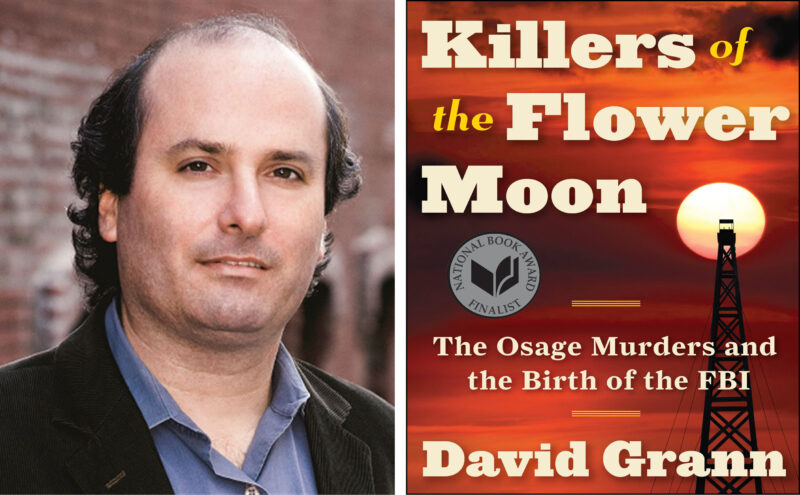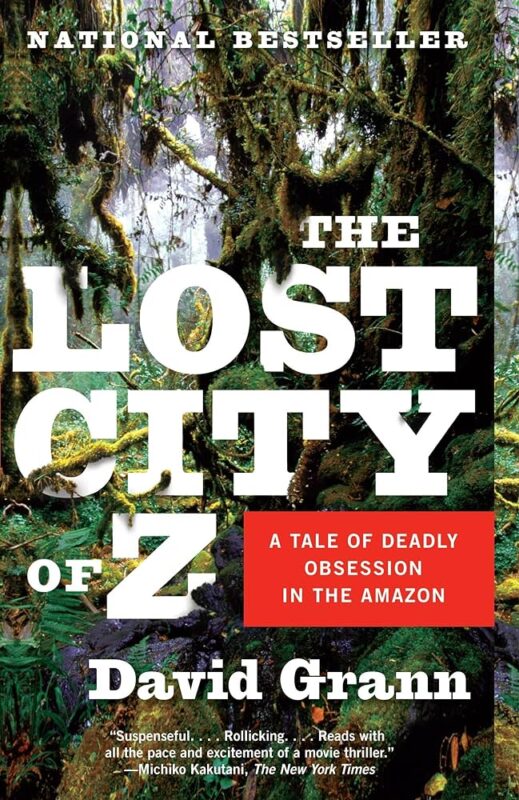‘Killers of the Flower Moon’ and history without the yawn
“In April, millions of tiny flowers spread over the blackjack hills and vast prairies in the Osage territory of Oklahoma. There are Johnny-jump-ups and spring beauties and little bluets. … In May, when coyotes howl beneath an unnervingly large moon, taller plants, such as spiderworts and black-eyed Susans, begin to creep over the tinier blooms, stealing their light and water. The necks of the smaller flowers break and their petals flutter away, and before long they are buried underground. This is why the Osage Indians refer to May as the time of the flower-killing moon.”
So begins American journalist and storyteller David Grann’s historical account, “Killers of the Flower Moon: The Osage Murders and the Birth of the FBI.” Published in 2017, the book investigates a series of murders in the early 1920s of a staggeringly large number of wealthy Native Americans in Osage County, Okla.

What happened, basically, was, though the Osage “had been assured by the U.S. government that their Kansas territory would remain their home forever,” before long they found themselves under siege from settlers (including, interestingly, the family of Laura Ingalls Wilder, who later wrote “Little House on the Prairie”). In 1870, “expelled from their lodges, their graves plundered,” the Osage agreed to sell their Kansas lands for $1.25 an acre. “Nevertheless, impatient settlers massacred several of the Osages, mutilating their bodies and scalping them,” prompting an Indian Affairs agent to comment, “The question will suggest itself, which of these people are the savages?”
The Osage, essentially refugees from territory that they had been promised, ended up purchasing 1.5 million acres of rough, uninhabitable, virtually unworkable land in Northeast Oklahoma. Not a great situation. But then in 1894, crude oil was discovered on the ostensibly unpromising land, and by the 1920s the Osage had become crazy rich with the royalties from oil sales. They were able to afford mansions, cars, chauffeurs, a total reversal of fortunes.
But then, they started dying.
Grann reveals, over the course of 321 pages, how — by dynamite, gunshot, poison and other means — wealthy members of the Osage tribe and their heirs were systematically murdered.
As the Osage deaths multiplied, the news caught the attention of a young J. Edgar Hoover of the fledgling Federal Bureau of Investigations. To help unravel the tangle of the mystery of who was behind all the bloodshed, Hoover enlisted the help of former Texas Ranger, Tom White. White assembled a motley team of cowboys and private eyes to help expose what turned out to be a sinister, coldblooded conspiracy that will blow your mind with its greed and hardheartedness.
I listened to this book on audio. It was fantastic and engrossing and got me through miles and miles of otherwise uneventful driving. But honestly, it might be better to experience this one on the written page. For one, the actual book has photographs, so you can see the faces of many of the characters — heroes, villains and victims alike. Also, there are so many players in this story and so much detail, I found it a bit tough to keep straight, while driving, who’s who and how it was all going down. But don’t get me wrong, I was riveted by the audio version. I just had to rewind a lot. My plan is to go back and read the actual book. And yes, it’s that good.
As The Boston Globe commented, this is “a masterful work of literary journalism crafted with the urgency of a mystery.” Exactly. Highly, highly recommend.
Oh, and postscript: I hear that “Killers of the Flower Moon” has been made into a movie, directed by Martin Scorcese, with Leonardo DiCaprio, Robert De Niro, Lily Gladstone and Brendan Fraser, being released on Oct. 20. But I strongly suggest reading the book first.
Another book by David Grann I would also recommend is “The Wager: A Tale of Shipwreck, Mutiny and Murder,” the true story of a ship that sets sail from England in 1740 to embark on a secret mission during an imperial war with Spain.
On Jan. 28, 1742, a wasted version of the same ship washes up on the Brazilian coast, with 30 men, emaciated and clinging to life, with some crazy tales to tell. I read this book a while ago and passed it on to my son, who is a picky reader but says he is enjoying it. I loved it.
David Grann is also the author of “The Lost City of Z: A Tale of Deadly Obsession in the Amazon,” which it seems everyone on the planet has read except for me, and “The Devil and Sherlock Holmes: Tales of Murder, Madness, and Obsession,” which I’ve also have not read, but certainly plan to.

Though his style is different and unique, Grann’s work reminds me a bit of that of Erik Larsen, who has written a number of mostly nonfiction books, including “The Devil in the White City,” “Dead Calm” and “In the Garden of Beasts: Love, Terror, and an American Family in Hitler’s Berlin,” all of which take historical events and make them read like good stories.
As a student of history in high school and college, I found myself more often than not bored and disengaged, chin in hand, staring longingly out the window at the living, breathing modern world beyond the glass. I mean: So many men, so many wars, so many dates to remember. (Yawn.) I knew it was important, but it all seemed so colorless and boring and dry and drab.
With Grann and Larsen it’s a whole different ball game. Their tales — all true, all historical, all well researched — are spellbinding, colorful, highly compelling and actually illuminating.
“History, despite its wrenching pain, cannot be unlived, but if faced with courage, need not be lived again,” writes Maya Angelou.
Thank you to David Grann and all the artists and writers of every generation who have helped us face history, with all its joys and sorrows, glory and shame. May the stories help us to not relive the wrenching pain parts. Seriously.
